As Congress continues deliberating on whether or not fund the U.S. Coast Guard’s desperately needed heavy icebreaker program at all, a congressional watchdog has raised questions about whether the service has done enough to mitigate possible delays and additional costs. Any slip in the planned delivery schedule could leave the United States without any of these specialized ships for an extended period of time and hamper the U.S. government’s ability to operate in the increasingly contested and immensely strategic Arctic region.
The Government Accountability Office (GAO) released its latest review of what is formally known as the Heavy Polar Icebreaker (HPIB) program on Sept. 4, 2018. The report includes six separate recommendations for the Coast Guard and the Department of Homeland Security, including establishing technology readiness baselines for specific components of the planned ships, updating cost estimates, creating a firm program schedule, formally identifying and analyzing the possible impact of any risk factors, setting up an acquisition plan for the first ship, and clarify how the U.S. Navy might help provide funds in the future to offset any cost growth.
“The Coast Guard – a component of the Department of Homeland Security (DHS) – did not have a sound business case in March 2018, when it established the cost, schedule, and performance baselines for its heavy polar icebreaker acquisition program,” GAO’s report explained in its executive summary. “GAO’s analysis of selected lead ships for other shipbuilding programs found the icebreaker program’s estimated construction time of 3 years is optimistic. As a result, the Coast Guard is at risk of not delivering the icebreakers when promised and the potential gap in icebreaking capabilities could widen.”
At present, the Coast Guard and the Navy plan to collectively contribute nearly $1 billion over the coming years to the HPIB program with a goal of having the first of three heavy icebreakers in service by 2023. The second and third ships would arrive in 2025 and 2026. After that, the Coast Guard has plans to acquire three more medium icebreakers.

The Coast Guard’s existing icebreaker fleet technically consists of three ships, the USCGC Polar Star, USCGC Polar Sea, and USCGC Healy, the latter of which is a medium icebreaker with a more limited capability to move through ice-filled waters than the two heavy Polar-class ships. The Polar Sea is also in a permanently inactive state, serving as a source of spare parts for its sister ship. Despite undergoing an extensive refit between 2010 and 2012, the 1970s-era Polar Star remains prone to breakdowns and other problems.
GAO’s argument against the HPIB program’s existing cost estimates and delivery schedule is that the Coast Guard laid out its baseline requirements before knowing what shipbuilders would be able to offer, which could lead to “an unstable design, thereby increasing the program’s cost and schedule risks.” In February 2017, the service did hand out five contracts, worth a combined $20 million, for design review studies to Bollinger Shipyards, Fincantieri Marine Group, General Dynamics/National Steel and Shipbuilding Company (NASSCO), Huntington Ingalls, and VT Halter Marine, but it has yet to pick a winner.
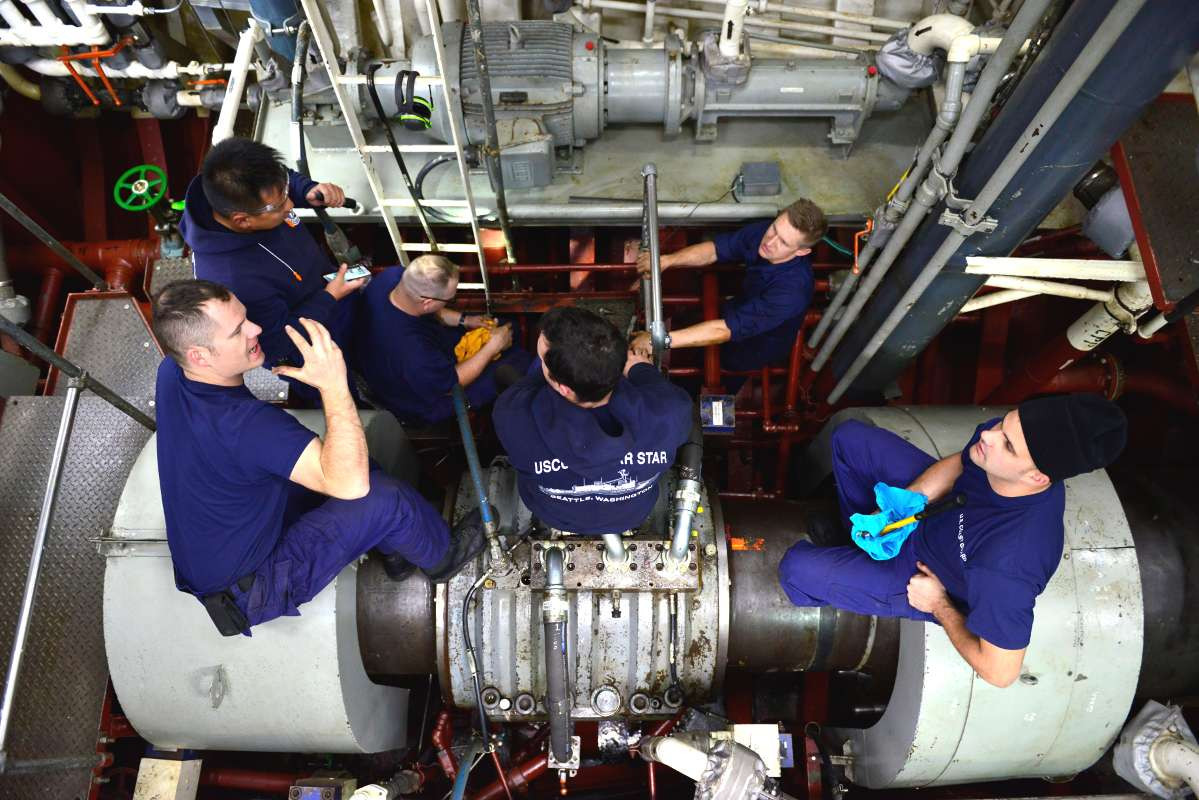
In addition, the watchdog says that while the Coast Guard says it plans to use “proven technologies” for the new icebreakers, it did not complete a formal assessment of whether those systems were truly mature and ready to go into the proposed ship. Again, the concern is that any company that ends up building the HPIBs could then uncover unforeseen issues during construction, delaying the work and increasing the ship’s price tag.
The GAO review did say that the Coast Guard’s cost estimate seemed reasonable and well-founded, but noted that it did not include any appraisal of how expensive it might be to operate and sustain the ships. As such, the investigators warned that the service might be undervaluing how much funding the HPIB program will actually need in the long term.
Lastly, and perhaps most importantly, GAO warned that the complete schedule for acquiring the ships was based on the need to avoid a gap in heavy icebreaker capability rather than any understanding of how much time would be necessary to build the ships. The watchdog noted that almost all major surface ships the Coast Guard and Navy has acquired in recent years took longer to build and also typically came in months behind schedule.
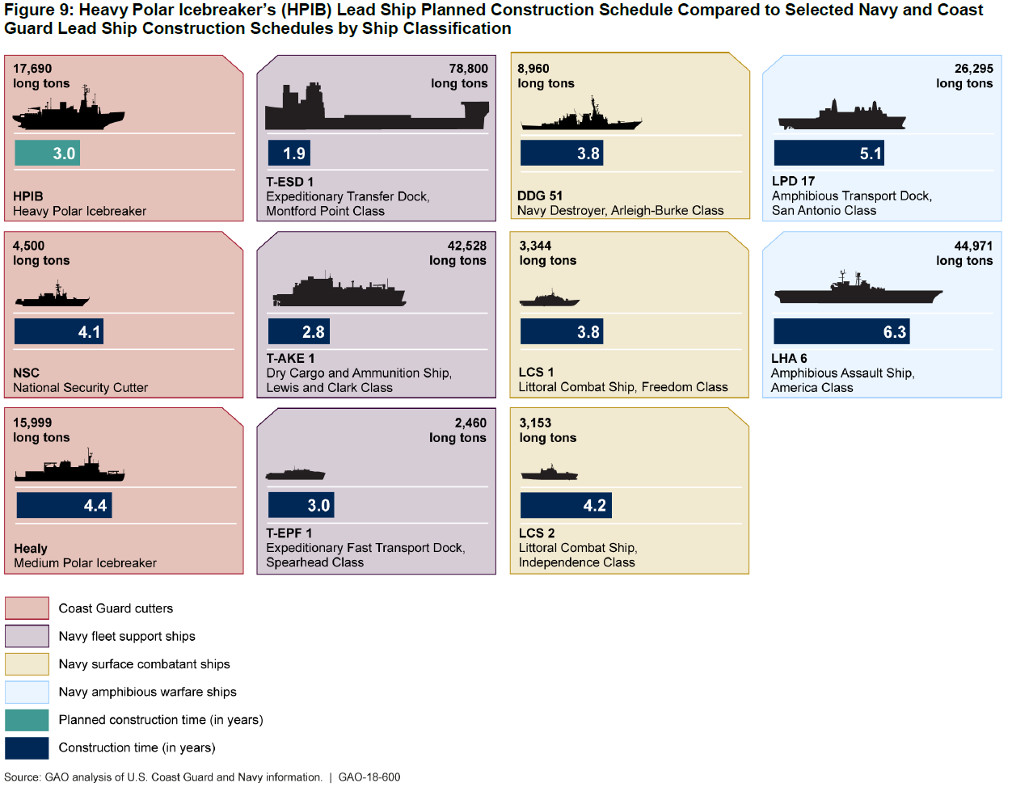
These are definitely all reasonable concerns. GAO has reviewed a number of
Navy shipbuilding projects in depth in recent years and came to many of the same conclusions, only to be proven right in the end as costs grew and schedules slipped. The most notable example of this has been the watchdog’s reporting on the seemingly perpetually troubled Ford-class aircraft carrier program. But the HPIB won’t be anywhere near as complicated as an aircraft carrier or many of the other warships GAO used for comparison.
Of course, shipbuilding is, in general, a complicated process and the Coast Guard is no stranger to difficulties. It last major ship program, the National Security Cutter, experienced significant delays due, in part, to the discovery of serious design flaws. Just on Sept. 5, 2018, Vigor Marine completed important structural enhancements on one of these vessels, USCG Waesche, which had first entered service in 2010.
Still, the final HPIB design could very well be a derivative of an existing civilian design or incorporate many lower-risk commercial grade components. This would make it much more akin to the U.S. Navy’s Montford Point-class Expeditionary Transfer Dock (T-ESD) logistics ships, which General Dynamics/NASSCO derived from the existing civilian Alaska-class oil tanker design, which also helped reduce risks and keep costs down. Of the shipbuilding program’s GAO examined, the investigators noted that the Navy not only received the first T-ESD on a truncated schedule, it got the ship a year and a half ahead of schedule.
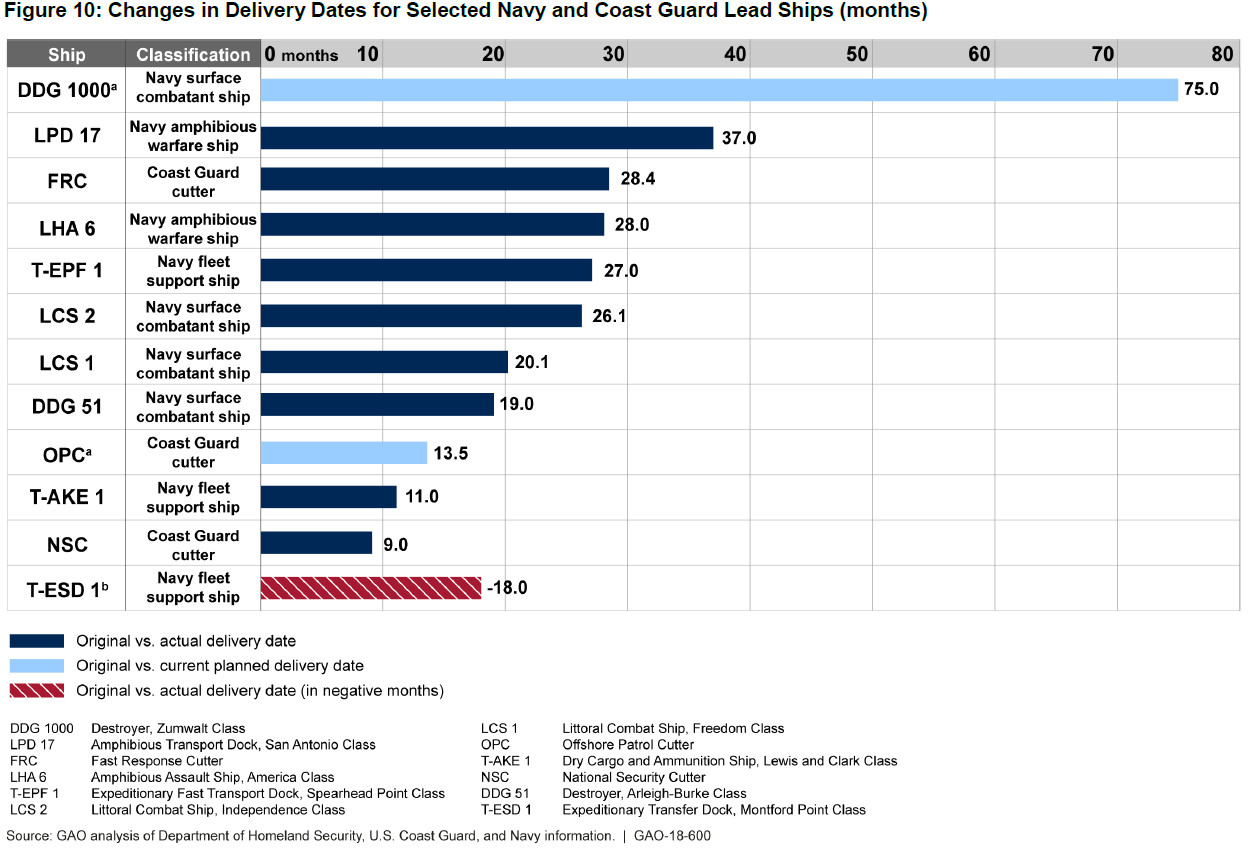
While the Coast Guard has discussed adding anti-ship cruise missiles or other more combat-oriented military-type hardware onto the HPIBs, the plan seems to be to include trade-space in the design to allow the service to add in those systems in the future rather than make them a core part of the ship when it first enters service. This could add to the GAO’s concerns that the Coast Guard may not have a good sense of how much the icebreakers will cost over the course of their service life.
In addition, Italy’s Fincantieri Marine Group might stand out as a leading contender for the HPIB contract for similar reasons, since it is already building new heavy icebreakers for Canada. Since November 2016, the Coast Guard has been in discussions with the National Research Council of Canada, which will operate the Canadian ships, to help develop the requirements for its own HPIBs.
Fincantieri representatives told The War Zone at the Navy League’s 2018 Sea-Air-Space Exposition in April 2018 that the company would likely pitch the Coast Guard on a version or derivative of the Canadian design. This would allow the Navy to leverage an existing, in production design, and the cost benefits that come with it. The Canadian program has suffered its own delays, but due to shifting government funding priorities rather than major slips in the construction schedule.
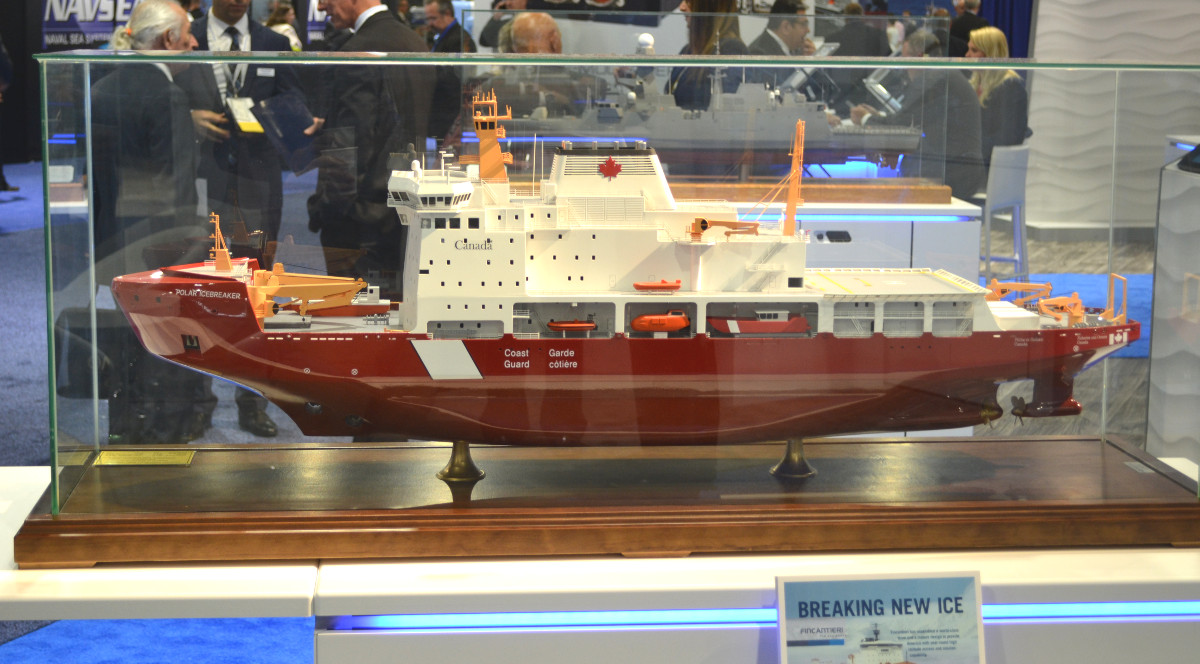
None of this is to say that it Coast Guard shouldn’t follow GAO’s recommendations, all of which the Department of Homeland Security agreed were reasonable, and double check its figures and planned schedules just to be sure. The service can ill afford delays in getting new icebreakers for any reason.
Even if the HPIB program goes entirely as planned, the existing, truncated schedule may not be enough the Coast Guard from ending up, at least for a time, with no heavy icebreakers what so ever. Polar Star is due to undergo a service life extension program to keep the ship operational into 2025.
Without this overhaul, the icebreaker would likely be headed into retirement by the end of 2020. Even if this work goes ahead, though, the ship will be out of commission for at least some period of time and there is no backup. If the HPIB program’s schedule slips significantly and the lead ship hasn’t arrived by 2025, the only alternatives would be put Polar Star through another refit or go without a heavy icebreaker until the new ships arrive.
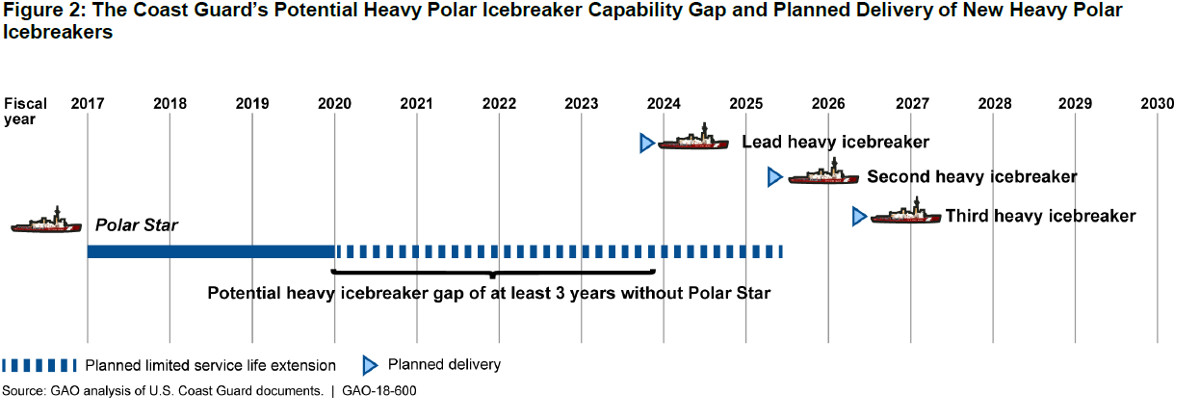
On top of all this, the HPIB’s schedule may slip in the end regardless of GAO’s recommendations and whatever the Coast Guard might discover about its proposed plan as it evaluates and assess various elements of the program. In July 2018, the House Appropriations Committee eliminated all funding for the icebreakers from their latest draft of the Department of Homeland Security Appropriations Bill for the 2019 Fiscal Year and moved that money into the budget for President Donald Trump’s signature border wall project.
That bill has yet to come to a vote and legislators would need to reconcile it with a version in the Senate that does include the full $750 million that Coast Guard requested for the HPIB program. The proposed House spending package would maintain $15 million for the Polar Star’s service life extension.
It’s hard to overstate just how short-sighted the House’s proposed shift in funding priorities would be. The Coast Guard has been working in earnest to get new icebreakers since 2014, at which time a capability gap seemed unavoidable, which led to the decision to try to accelerate the HPIB program’s schedule.

At the same time, as polar ice continues to recede and the period where seasonal ice presents a risk to ships gets shorter, various countries have become increasingly interested in exploring the Arctic’s natural resource wealth, as well as using it as a passage for commercial shipping. In August 2018, the Denmark-headquartered Maersk Line announced plans to become the first shipping company to ever send a container ship through Russia’s Northern Sea Route. The firm’s goal is to collect information about just how practical the passage has become and whether it is now safe enough for routine transit.
This, in turn, has increased the need for the United States to be able to effectively patrol and monitor its own claims and ensure other parties are respecting those boundaries. There is similarly an increased potential for armed conflict in the region, which has led the U.S. military to focus more heavily on preparing various sea, air, and ground units to fight in the frigid north. Russia and China have only expanded both military and civilian activities in the Arctic. The Kremlin, in particular, continues to establish new bases the region and develop other specialized cold-weather military capabilities.
Without icebreakers, ice could severely limit the ability of the Navy’s combat vessels to operate in the area during any crisis. The Russians, by contrast, as well prepared for this contingency with a fleet of dozens of icebreakers of varying sizes and capabilities, including nuclear-powered icebreakers and smaller anti-ship cruise-missile armed types.
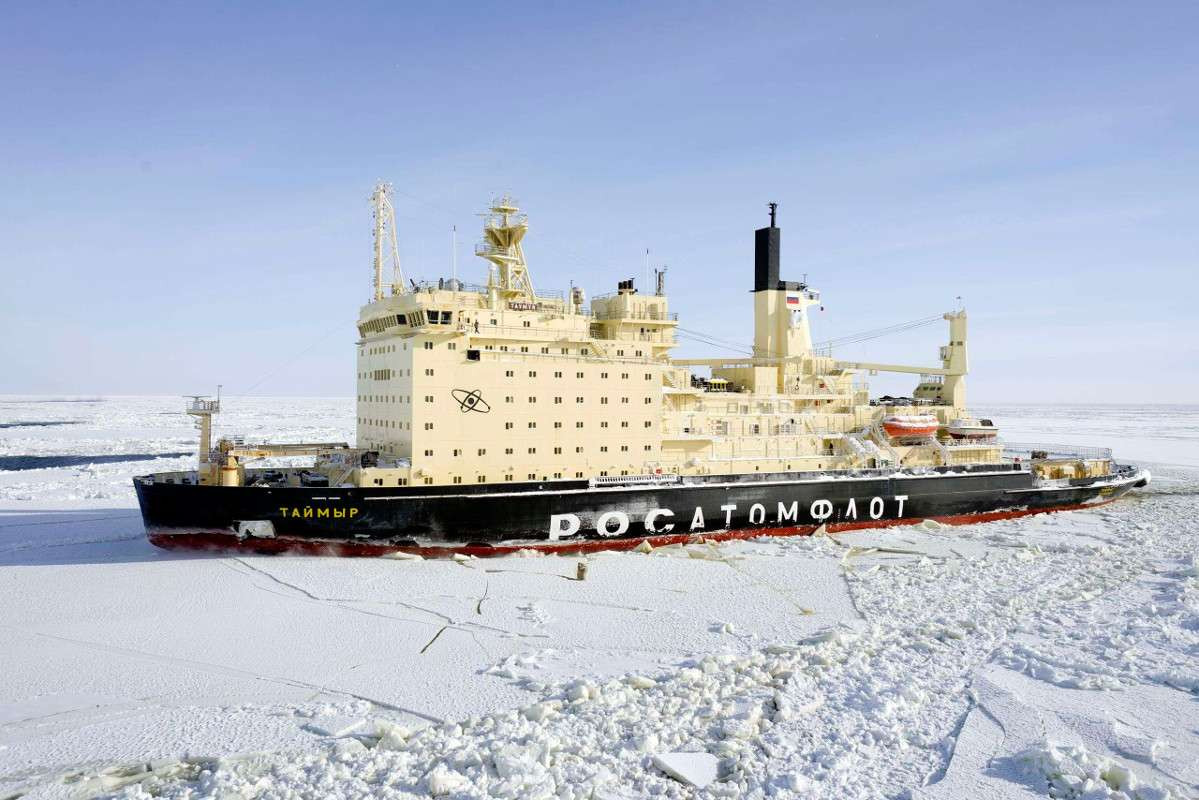
“We really need to be in that part of the world all the time,” Coast Guard Commandant Admiral Karl Schultz said at a gathering U.S. Naval Institute at the Center for Strategic and International Studies hosted on Aug. 1, 2018. “We need six icebreakers. Three of them need to be heavy icebreakers, and we really need one of them today.”
Schultz isn’t wrong and the Coast Guard really owes it to itself to ensure that it is running the HPIB program as well as it can in order to get these vital ships into action as fast as is humanly possible. But it will also be up to Congress to make the right call and not push off fully funding the icebreakers any longer.
Contact the author: jtrevithickpr@gmail.com
